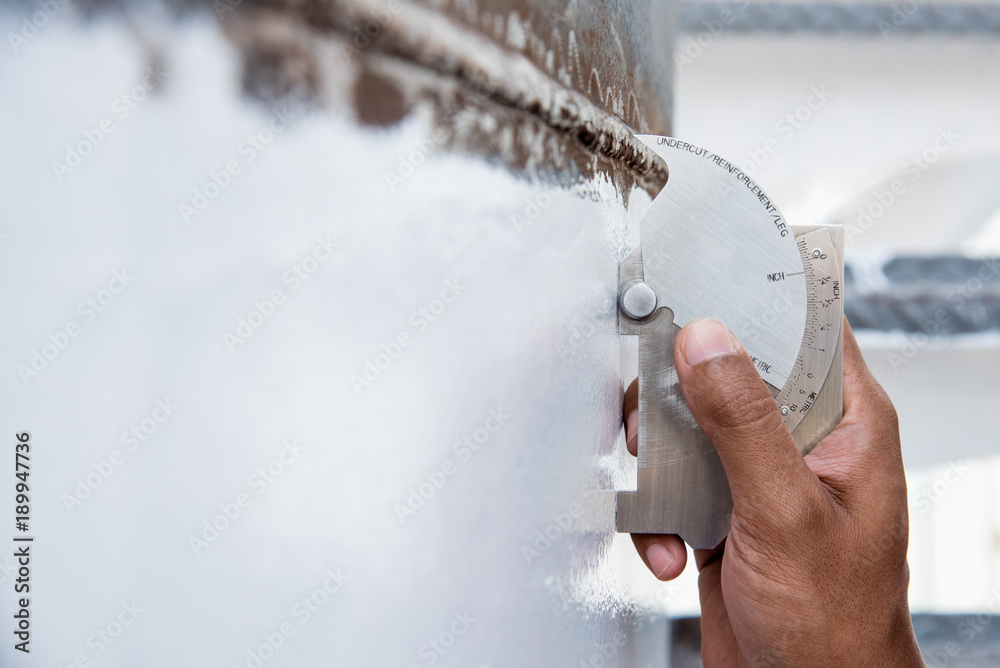Comprehending the Key Steps in Tank Welding Inspection Procedures
Wiki Article

Recognizing the Importance of Rigorous Container Welding Assessment Processes in Stopping Failings and Enhancing Life Expectancy
In the realm of commercial procedures, the relevance of extensive container welding inspection processes can not be overemphasized. By applying numerous inspection approaches, organizations can spot defects early, thus avoiding pricey consequences and expanding the life of their storage tanks.Relevance of Welding Assessments
Identifying the important duty of welding evaluations in keeping architectural honesty, these procedures make certain that welds meet recognized standards and specs - Tank Welding Inspection. Reliable welding assessments are paramount in the building and maintenance of containers, as they directly influence the resilience and safety and security of the structures. By identifying prospective deficiencies, such as inappropriate strategies or material issues, examinations alleviate the danger of catastrophic failuresWelding evaluations include different techniques, including aesthetic evaluations, non-destructive screening (NDT), and analyses of welding procedures. Each method serves to confirm the quality and compliance of welds with industry laws, consequently securing both personnel and ecological interests. Additionally, normal examinations foster a society of liability and quality within the workforce, ensuring that all group members follow best techniques.
Furthermore, these examinations contribute to the total lifecycle administration of containers by identifying wear or deterioration early in the procedure. By attending to these concerns proactively, organizations can prolong the operational life expectancy of their assets, eventually resulting in cost financial savings and improved dependability. In recap, the significance of welding examinations can not be overstated; they are important for making sure safety and security, long life, and compliance in container construction and upkeep.
Typical Causes of Storage Tank Failings
Comprehending the typical reasons of storage tank failings is crucial for preventing catastrophic cases and ensuring the longevity of storage space systems. One prevalent reason of storage tank failing is corrosion, which can significantly weaken the structural integrity of tanks over time. Ecological aspects, such as exposure to moisture, chemicals, and temperature changes, can increase this procedure.Another essential variable is inappropriate welding techniques, which might bring about flaws like cracks or insufficient joints. These issues can endanger the tank's stamina and bring about leakages or tears. In addition, insufficient maintenance techniques can result in undetected damage, ultimately raising the risk of failure.
Style defects, including insufficient thickness or poor material option, can likewise add to container susceptabilities. Operational aspects, such as overfilling or direct exposure to extreme stress, can stress the storage tank beyond its desired restrictions.
Key Inspection Methods
Efficient inspection methods play a crucial role in minimizing the threats related to storage tank failures. A thorough method to container welding examination involves a number of vital methods, each developed to identify possible flaws and make sure structural honesty.Aesthetic assessment stays the first line of defense, permitting inspectors to determine surface abnormalities such as splits, deterioration, or imbalance. This strategy is frequently supplemented by non-destructive testing (NDT) techniques, which are necessary for evaluating weld other high quality without compromising the container's honesty.

Moreover, magnetic particle testing (MPT) and color penetrant testing (DPT) are reliable for spotting surface area problems in ferromagnetic materials and non-porous surfaces, specifically. Each method has its toughness and limitations; as a result, a combination of approaches is often used to accomplish detailed inspection outcomes.
Advantages of Strenuous Evaluations
While the instant prices of extensive evaluations might seem complicated, the long-term advantages significantly exceed these first financial investments. Carrying out detailed examination refines not only boosts the integrity and security of tank structures yet likewise minimizes the risk of devastating failings that can lead to substantial economic losses check my reference and environmental damage.
Rigorous inspections help recognize possible concerns early in the welding process, enabling for prompt restorative activities that prevent expensive fixings or replacements down the line. This aggressive strategy promotes a society of quality control, where adherence to ideal methods comes to be instilled in functional treatments. Furthermore, regular evaluations add to raised property long life, as they make sure that storage tanks continue to be in optimal condition throughout their lifespan.
In enhancement, the paperwork generated from these examinations works as an important source for maintenance planning and efficiency assessments. This data-driven technique can additionally improve operational performance, bring about reduced downtime and boosted performance. Ultimately, extensive evaluations not only protect the architectural stability of tanks but likewise supply substantial financial benefits, reinforcing the concept that investing in quality control is a sensible decision for any type of organization entailed in tank procedures.
Regulatory Standards and Compliance
Regulatory standards and compliance are crucial components of tank welding examination procedures, as they establish the framework for making certain safety and security and high quality in operations. Compliance with these criteria not just reduces dangers however also enhances the total integrity of bonded frameworks. Various organizations, including the American Culture of Mechanical Engineers (ASME) and the American Oil Institute (API), offer standards that determine acceptable techniques for welding, inspection, and testing.These criteria mandate using certified personnel, the application of strenuous assessment procedures, and adherence to particular welding procedures. By aligning with regulative demands, organizations can make sure that their tanks meet the essential safety and security and efficiency standards, consequently decreasing the possibility of catastrophic failures that can lead to considerable monetary losses and ecological damage.

In addition, regulative conformity cultivates a society of accountability and continual renovation within the welding and manufacture sectors (Tank Welding Inspection). Routine next page audits and assessments ensure that techniques stay aligned with evolving criteria, thus promoting lasting dependability and operational performance. Eventually, adherence to regulatory criteria not only shields possessions but additionally improves the lifespan of bonded tanks, guaranteeing they serve their desired function properly gradually
Conclusion
In final thought, rigorous container welding examination processes play an important function in stopping failings and extending the lifespan of storage structures. By determining prospective shortages via numerous inspection techniques, organizations can reduce dangers connected with container honesty.Report this wiki page